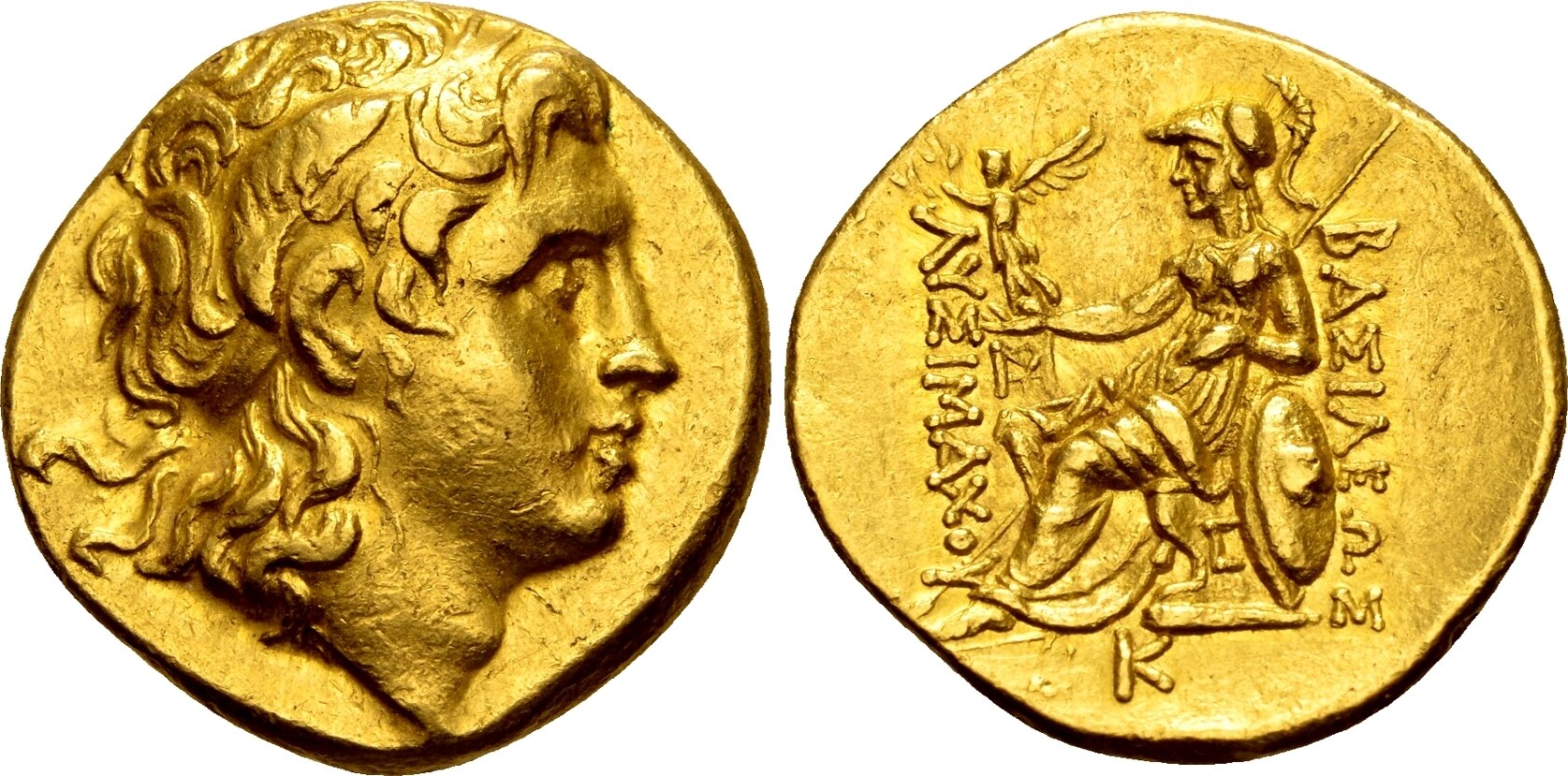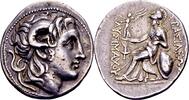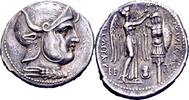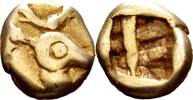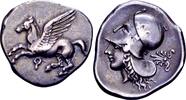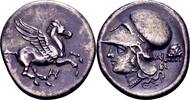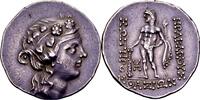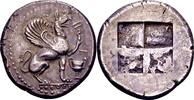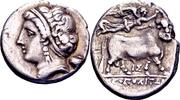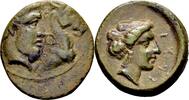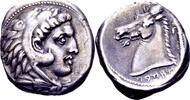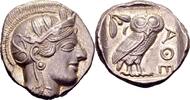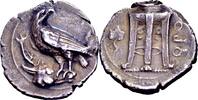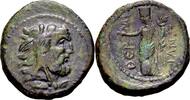MA-ID: 131900298
Bewertungen Agora
A magnificent piece well worth the investm,,thank you Great service
Wundervolle Tetradrachme und exzellenter Service. Gerne wieder! Danke aus B...
Maximum satisfaction in all respects.
Perfect
Ancient Greek stater Circa 286-282 BC. Kingdom of Thrace, Lysimachos Fast vorzüglich
AgoraAncientCoins 

13
Seit 13 Jahren bei MA-Shops
247 Bewertungen,
100 % Positiv (seit 24 Monaten)
Weltweiter Versand
13000,00 EUR
Der Artikel ist bereits ausverkauft.
Pella.
Obv: diademed head of the deified Alexander, with horns of Ammon, to the right.
Rev: BAΣIΛEΩΣ ΛYΣIMAXOY; Athena Nikephoros seated to the left, left arm resting on shield, transverse spear in background; monogram to inner left, C-like symbol on throne, in exergue: K.
Ref: Müller –; SNG Lockett 1247 var. (letter on throne); Jameson 2464 var. (same); Naville IV, lot 521 (same dies); Triton XVIII, lot 426 (same dies).
Light marks.
Ex Regierungsrat Dr. iur. Hans Krähenbühl Collection (Leu Numismatik AG 8, 23 October 2021), lot 41, purchased from Bank Leu, 15 May 1973; Hess-Leu 45 (12 May 1970), lot 110; Hess-Leu 28 (5 May 1965), lot 132; Collection of a Foreign Amateur (Glendining, 13 December 1963), lot 242; Ars Classica XIII (27 June 1928), lot 1261.
As Alexander the Great returned from his expedition to the Oracle at the Siwa oasis, he claimed to be the son of Zeus-Ammon. However strange this may seem, even in our age with its fluid gender-identification, this could have been a well thought through plan.
Having just conquered Egypt made him a successor to the Pharaohs. Every Pharaoh was thought of as a God reincarnate. In this way, Alexander played into the beliefs of the Egyptians and he could have hoped that it would make him a more acceptable ruler to the population.
Alexander as the son of Zeus-Ammon has been immortalized on coins of Lysimachos, the later King of Thrace and Alexanders former bodyguard. On the silver tetradrachms and gold staters Alexander is depicted with rams’ horns, the identifying mark of Zeus-Ammon.
This image proved so popular that it was used on coins around the Aegean for centuries.
Obv: diademed head of the deified Alexander, with horns of Ammon, to the right.
Rev: BAΣIΛEΩΣ ΛYΣIMAXOY; Athena Nikephoros seated to the left, left arm resting on shield, transverse spear in background; monogram to inner left, C-like symbol on throne, in exergue: K.
Ref: Müller –; SNG Lockett 1247 var. (letter on throne); Jameson 2464 var. (same); Naville IV, lot 521 (same dies); Triton XVIII, lot 426 (same dies).
Light marks.
Ex Regierungsrat Dr. iur. Hans Krähenbühl Collection (Leu Numismatik AG 8, 23 October 2021), lot 41, purchased from Bank Leu, 15 May 1973; Hess-Leu 45 (12 May 1970), lot 110; Hess-Leu 28 (5 May 1965), lot 132; Collection of a Foreign Amateur (Glendining, 13 December 1963), lot 242; Ars Classica XIII (27 June 1928), lot 1261.
As Alexander the Great returned from his expedition to the Oracle at the Siwa oasis, he claimed to be the son of Zeus-Ammon. However strange this may seem, even in our age with its fluid gender-identification, this could have been a well thought through plan.
Having just conquered Egypt made him a successor to the Pharaohs. Every Pharaoh was thought of as a God reincarnate. In this way, Alexander played into the beliefs of the Egyptians and he could have hoped that it would make him a more acceptable ruler to the population.
Alexander as the son of Zeus-Ammon has been immortalized on coins of Lysimachos, the later King of Thrace and Alexanders former bodyguard. On the silver tetradrachms and gold staters Alexander is depicted with rams’ horns, the identifying mark of Zeus-Ammon.
This image proved so popular that it was used on coins around the Aegean for centuries.
Info / FAQ
Informationen zum Kauf bei MA-Shops
Bestellungen bei MA-Shops sind jederzeit möglich und werden innerhalb von 2-4 Arbeitstagen verschickt.
Ein über die MA-Shops abgesicherter Kauf findet niemals außerhalb von MA-Shops statt.
Bestellen Sie sicher online mit dem MA-Shops Warenkorb.
Vielen Dank.
Ein über die MA-Shops abgesicherter Kauf findet niemals außerhalb von MA-Shops statt.
Bestellen Sie sicher online mit dem MA-Shops Warenkorb.
Vielen Dank.
|
Verkäufer-Startseite | 0Warenkorb | AGB | Impressum | MA AGB | Datenschutzerklärung | Garantie | MA-Shops Neuzugänge Copyright ® 2001-2025, MA-SHOPS Muenzen All Rights Reserved. Designated trademarks and brands are the property of their respective owners. |
 Münzen beim Fachhändler kaufen
Münzen beim Fachhändler kaufen



